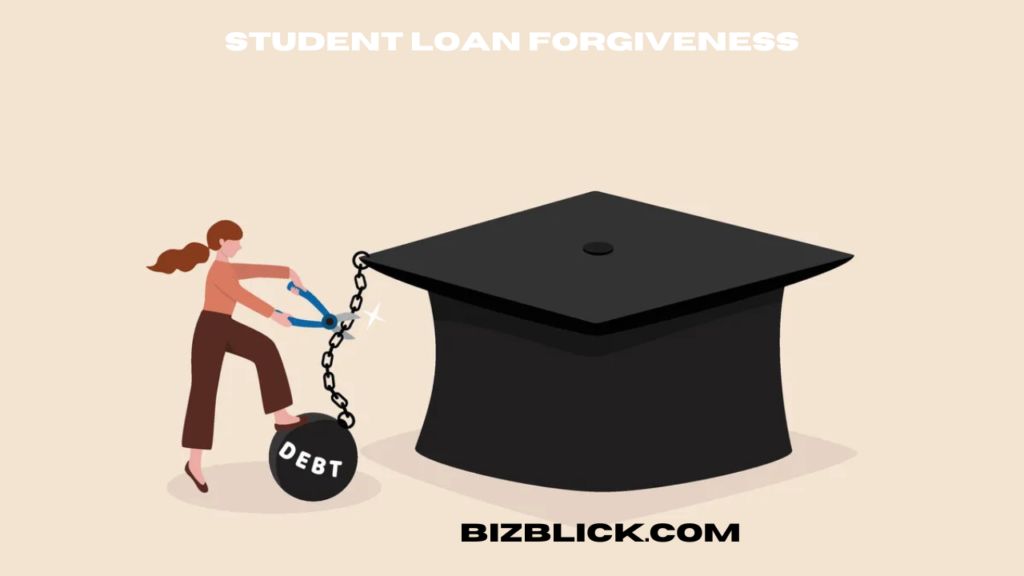Student loan forgiveness is a widely discussed topic, particularly as the cost of higher education continues to rise. With millions of borrowers struggling to manage their educational debt, understanding the various aspects of student loan forgiveness has become more important than ever. This article provides a detailed overview of student loan forgiveness, explores its types, eligibility criteria, pros and cons, and examines its potential impact on students and the economy.
What is Student Loan Forgiveness?
Student loan forgiveness refers to a program that allows borrowers to have some or all of their student loan debt eliminated under specific conditions. Typically, these programs are initiated by the government or nonprofit organizations and are aimed at reducing the financial burden of education, especially for those in public service or other qualifying sectors.
The idea of loan forgiveness is rooted in the belief that education is a public good and that alleviating debt encourages individuals to contribute to society in meaningful ways without being hindered by financial stress.
Types of Student Loan Forgiveness Programs
There are several types of student loan forgiveness programs, each tailored to different borrower situations. Below are the most common types:
1. Public Service Loan Forgiveness (PSLF)
PSLF is one of the most well-known programs, designed for individuals working in public service jobs, such as government positions, education, or nonprofit organizations. Borrowers must:
- Work full-time for a qualifying employer.
- Make 120 qualifying monthly payments under a qualifying repayment plan.
After meeting these requirements, the remaining loan balance is forgiven.
2. Teacher Loan Forgiveness
This program benefits teachers working in low-income schools or educational service agencies. Eligible teachers can have up to $17,500 of their loans forgiven, depending on their subject area and years of service.
3. Income-Driven Repayment (IDR) Plan Forgiveness
Borrowers on income-driven repayment plans, such as Pay As You Earn (PAYE) or Income-Based Repayment (IBR), may qualify for forgiveness after 20-25 years of consistent payments. Although this program is not as targeted as PSLF, it offers relief to borrowers with high debt-to-income ratios.
4. State-Based Forgiveness Programs
Many states offer their own student loan forgiveness programs aimed at addressing workforce shortages in specific professions, such as healthcare, education, or law enforcement.
5. Military Loan Forgiveness
Active-duty military personnel may qualify for loan forgiveness or repayment assistance through various federal programs, such as the Armed Forces Loan Repayment Program.
Eligibility Criteria for Student Loan Forgiveness
Eligibility for student loan forgiveness varies by program. Below are some general factors that determine qualification:
- Employment Sector: Many forgiveness programs require employment in public service, education, or nonprofit sectors.
- Loan Type: Federal loans are typically eligible, while private loans are not.
- Repayment Plan: Borrowers must often be enrolled in specific repayment plans, such as IDR or standard repayment.
- Payment History: A consistent history of on-time payments is usually required.
- Work Duration: Some programs demand a minimum number of years in qualifying roles.
The Pros and Cons of Student Loan Forgiveness
Pros
- Financial Relief: Borrowers can significantly reduce or eliminate their debt, allowing them to achieve financial stability sooner.
- Encourages Public Service: Programs like PSLF incentivize careers in underserved areas, benefiting society as a whole.
- Improves Quality of Life: Without overwhelming debt, borrowers can afford homes, start families, or invest in their futures.
- Economic Stimulation: Debt relief can lead to increased consumer spending and economic growth.
Cons
- Complex Requirements: Many programs have strict criteria and lengthy timelines, making them difficult to navigate.
- Uncertain Benefits: Changes in policy or employment status can jeopardize forgiveness eligibility.
- Tax Implications: Forgiven amounts under some programs may be considered taxable income.
- Perceived Unfairness: Critics argue that forgiveness programs unfairly benefit specific groups over others.
Challenges and Criticisms of Student Loan Forgiveness
Student loan forgiveness is not without its controversies. Key challenges include:
- Administrative Hurdles: Many borrowers face issues with documentation and miscommunication from loan servicers.
- Limited Awareness: A significant number of borrowers are unaware of available programs or misunderstand the qualifications.
- High Costs: Forgiveness programs represent a substantial financial commitment for governments, sparking debates over budget priorities.
- Moral Hazard: Some critics argue that forgiveness may encourage excessive borrowing or reduce accountability.
The Impact of Student Loan Forgiveness
On Borrowers
For individuals, loan forgiveness can be life-changing, providing relief from debt that might otherwise take decades to repay. It can also free up resources for other financial goals, such as retirement savings or starting a business.
On the Economy
At a macroeconomic level, widespread loan forgiveness could lead to increased consumer spending and higher productivity as individuals are less constrained by debt. However, it may also increase national debt, depending on how programs are funded.
On Education
Forgiveness programs can incentivize higher education, but they also raise questions about accountability and sustainability in the student loan system. Addressing the root causes of high education costs remains essential.
Future of Student Loan Forgiveness
As discussions around student loan forgiveness continue to evolve, potential reforms include:
- Simplifying Programs: Streamlining eligibility criteria and application processes to make forgiveness more accessible.
- Expanding Access: Including private loan borrowers or individuals in non-public service roles.
- Addressing Systemic Issues: Tackling high tuition costs and predatory lending practices to reduce the need for forgiveness.
- Policy Changes: Political support for or against forgiveness may shift, affecting future availability and scope.
Conclusion
Student loan forgiveness offers a path to relief for millions of borrowers, fostering greater financial security and enabling contributions to society. While the programs have their challenges and limitations, they remain an essential tool for addressing the growing burden of educational debt. By understanding the nuances of student loan forgiveness, borrowers can make informed decisions and take advantage of opportunities to alleviate their financial challenges.
